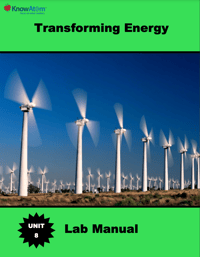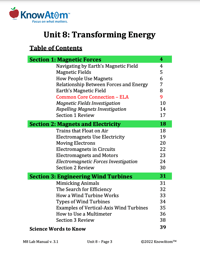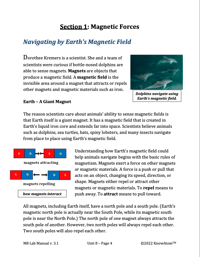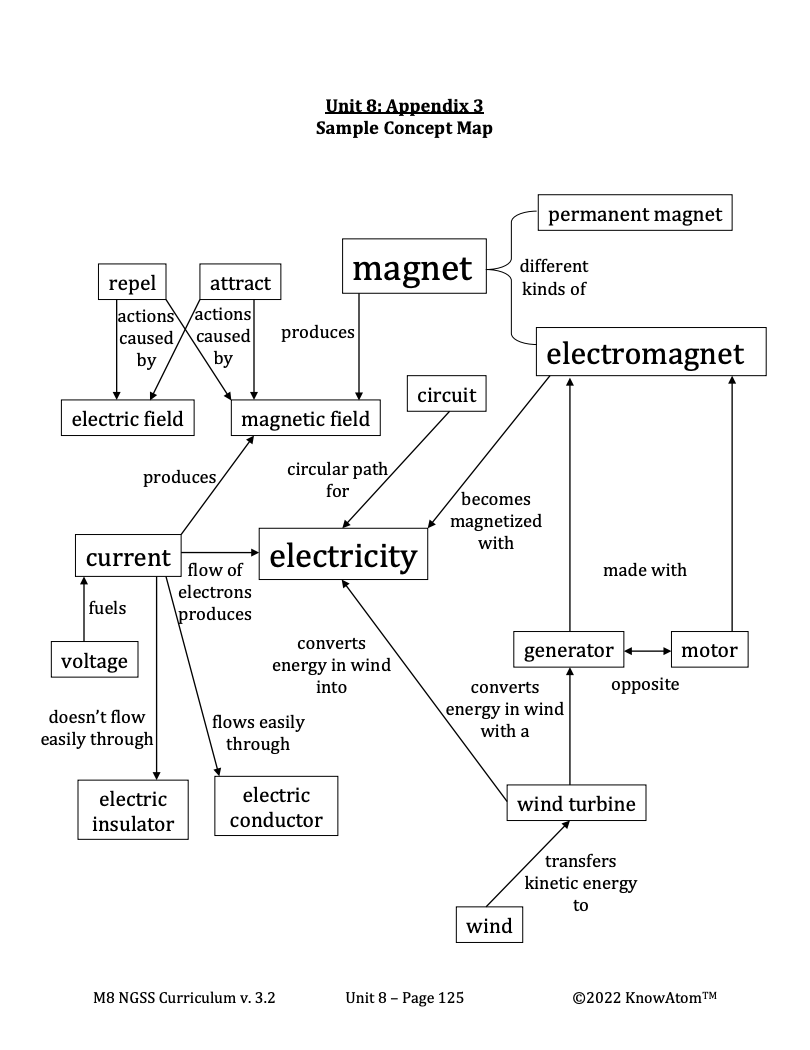Science background provides teachers with more in-depth information on the phenomena students explore in this unit. Below is an excerpt from this section on light information and transfer.
Light Waves
Fiber optic cables work because of how light interacts with different kinds of matter. All light is a form of kinetic energy that travels through space and matter. Light is complex, and there is still much that scientists don’t know about it. There are different models of light that scientists use to better understand how light moves and how it interacts with matter.
One model is a ray model. This model describes how light moves in a straight line. These straight-line paths are called light rays. Whenever you see a narrow beam of light, it is actually a bundle of many parallel light rays.
Another model is a wave model because in many instances, light behaves in a similar way to seismic, sound, or water waves. A light wave is a pattern of light energy that moves at a constant speed until meeting matter. Like mechanical waves, light waves have a wavelength, a frequency, and an amplitude. However, unlike mechanical waves such as seismic waves, light waves do not need a medium to travel.
There are different types of light, and the type of light energy depends on the amount of energy in the different waves. Scientists organize the different wavelengths of light on an electromagnetic spectrum. The range of light waves that humans can see, called visible light, is in the middle of this spectrum. Radio waves, which are sent out by radio stations and captured by your radio, have the lowest energy. Microwaves are used in appliances to heat up your food and in satellites for communication and navigation. X-rays are used at the dentist to capture images of teeth and at the airport to see through bags.
Light Waves and Matter
Light waves are a kind of transverse waves because the disturbance, coming from the source of light, moves perpendicular to the direction of the wave itself. All waves travel in a straight line, but their path can change when they interact with matter.
Reflection occurs when light bounces off of the surface of an object. Refraction occurs when light passes from one medium to another and changes its direction.
Unlike reflection, the light moves through the second material when it refracts. However, the direction of its path changes. Refraction is what happens when you look at an object that is partly in water and partly in air. The object appears bent at the water’s surface because the light moves more slowly in the water than in the air.
Absorption refers to the interaction of light energy with matter that results in the energy changing to thermal energy. A wave is absorbed when it hits a substance and causes the molecules of that substance to vibrate and move. This causes energy to be transferred away from the wave because it has been absorbed by the substance.
An object’s color is determined by how that object interacts with light and then reflects, absorbs, refracts, or transmits it. When visible light hits an object, different frequencies are absorbed and reflected. For example, a strawberry is red because it absorbs all of the frequencies of visible light that shine on it except for the frequency associated with red. Black objects absorb all wavelengths of light and convert them into thermal energy. In contrast, white objects reflect all wavelengths of light. This is why dark-colored objects warm up faster than light-colored objects.
Total Internal Reflection
Optical fibers transmit light by a process called total internal reflection. Imagine that you’re standing in a straight hallway. If you shine a flashlight down the hall, the light will travel through the hallway to the other end because light travels in a straight line.
Now imagine that the hallway has a curve in it. The light will travel in a straight line until it reaches the wall where the hallway curves. Some of the light will reflect off of the wall, and some will be absorbed by the wall. If you want the majority of the light to travel to the opposite end of the hallway, you could set up a mirror at the curve. Mirrors are highly reflective, so they could reflect the light around the corner. In a hallway with many curves, you could line the walls with mirrors to reflect the light all the way to the other end of the hallway.
This is essentially how fiber optic cables work. Each optical fiber has three parts. Its core is like the hallway. It is a thin strand of glass where the light travels. The core is surrounded by a highly reflective material called a cladding, which has a similar function to the mirrors on the wall. The cladding doesn’t absorb any light. Instead it constantly reflects light away from it.
As long as the light strikes the cladding at or above a certain angle, it will result in total internal reflection, where the light is continually reflected back. This is how the light is transmitted to the other end.
Fiber optic cables are commonly used in communication systems. A communications system is a group of interacting components that function together to transmit or exchange information between people and equipment. In a fiber-optic communication system, pulses of light are sent through the optical fibers. They have a transmitter at one end of the fiber to send information. A receiver on the other end picks up the information.










